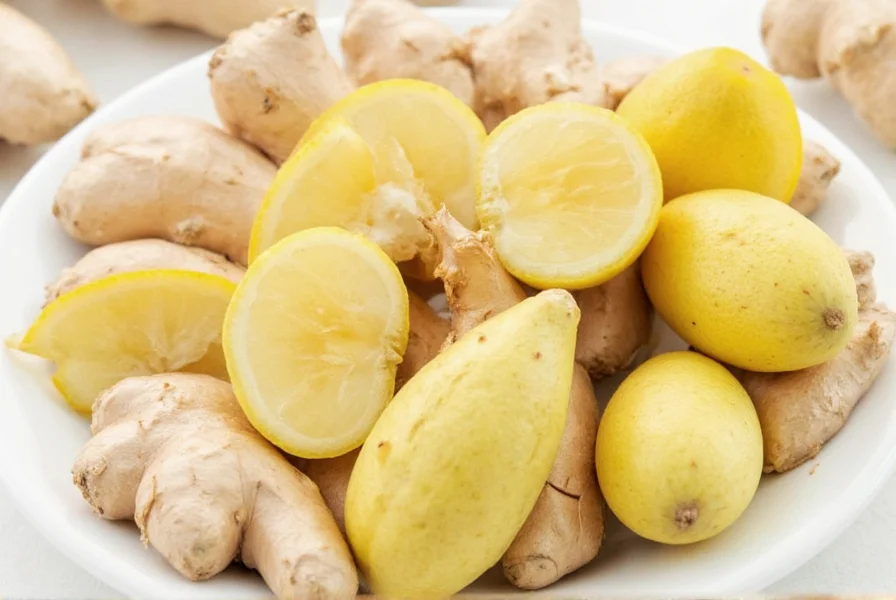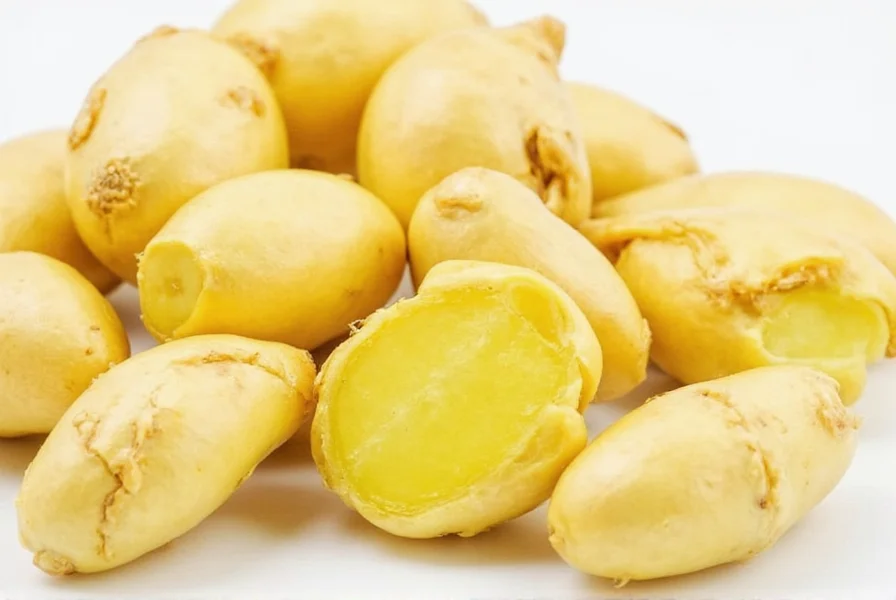Preserving ginger's pungent flavor and firm texture requires proper storage techniques that combat moisture loss and mold growth. Whether you've bought a large root for a recipe or want to extend the shelf life of your favorite spice, understanding the science behind ginger preservation ensures you'll always have this versatile ingredient ready for cooking, baking, or making teas.
Understanding Ginger's Preservation Challenges
Ginger root contains high moisture content (approximately 80%), making it susceptible to mold and spoilage when exposed to air and humidity. The key to successful ginger storage lies in controlling three factors: moisture, temperature, and air exposure. Unlike many root vegetables, ginger lacks a thick protective skin, requiring more careful handling to maintain freshness.
Top 5 Methods for Keeping Ginger Fresh
1. Refrigeration: The Everyday Solution
For short to medium-term storage, refrigeration works best for most households. How to store fresh ginger root properly in the fridge:
- Keep ginger unpeeled until ready to use
- Place in a resealable plastic bag with a dry paper towel
- Store in the crisper drawer (not the main refrigerator compartment)
- Replace paper towel if it becomes damp
This method maintains ginger's moisture balance while preventing excess humidity that causes mold. How long does ginger last in the refrigerator using this technique? Properly stored, fresh ginger remains usable for 2-3 weeks, significantly longer than counter storage.
2. Freezing: Long-Term Ginger Preservation
Can you freeze fresh ginger? Absolutely—and it's one of the most effective preservation methods. Freezing actually makes ginger easier to grate without thawing. Here's how to freeze ginger properly:
- Whole root method: Place unpeeled ginger in a freezer bag, removing as much air as possible. Grate frozen directly when needed.
- Pre-grated method: Peel and grate ginger, then freeze in tablespoon portions on a baking sheet before transferring to an airtight container.
- Vacuum sealing: For maximum shelf life, vacuum seal ginger with minimal air exposure.
Frozen ginger maintains quality for 4-6 months. The cell structure changes slightly when frozen, making it easier to grate but slightly less crisp when used raw.
| Storage Method | Shelf Life | Best For | Key Considerations |
|---|---|---|---|
| Room Temperature (counter) | 1 week | Immediate use | High mold risk; only suitable in very dry climates |
| Refrigerator (whole) | 2-3 weeks | Regular cooking needs | Use paper towel to absorb excess moisture |
| Refrigerator (peeled) | 1 week | Pre-prepped ingredients | Store in airtight container with water change daily |
| Freezer (whole) | 4-6 months | Long-term storage | Easier to grate when frozen; no need to thaw |
| Pickling | 1-2 months | Cocktails and Asian dishes | Changes flavor profile; requires vinegar solution |
3. Pickling: Flavor-Enhanced Preservation
Pickling transforms ginger while extending its life. This method works particularly well for sushi ginger or cocktail garnishes. To pickle ginger:
- Peel and thinly slice ginger
- Prepare a solution of equal parts rice vinegar, water, and sugar with optional red food coloring
- Simmer ginger in solution for 5 minutes
- Cool and store in airtight container in refrigerator
Pickled ginger lasts 1-2 months refrigerated. While this changes the flavor profile, it creates a versatile ingredient for multiple culinary applications.
4. Alcohol Preservation: For Specialized Uses
Soaking ginger in alcohol creates a preservation method ideal for medicinal tinctures or cocktail ingredients. Vodka works best due to its neutral flavor. Simply peel and slice ginger, submerge in vodka, and store in a cool, dark place. This method preserves ginger indefinitely while extracting its beneficial compounds.
5. Drying: Traditional Preservation Technique
Drying ginger concentrates its flavor and extends shelf life dramatically. You can air-dry thin slices for 1-2 weeks or use a food dehydrator at 135°F (57°C) for 8-12 hours. Store dried ginger in an airtight container away from light. Rehydrate by soaking in warm water when needed, or grind into powder for spice blends.
How to Tell If Ginger Has Gone Bad
Identifying spoiled ginger prevents food waste and potential illness. Watch for these signs that indicate ginger should be discarded:
- Mold growth: Any visible fuzz or discoloration
- Soft, mushy texture: Especially at the ends
- Foul odor: Sour or unpleasant smell
- Wrinkled appearance: Excessive shriveling beyond normal drying
- Grayish color beneath the skin when peeled
Minor wrinkling is normal and doesn't affect usability—simply trim any dry ends before use. How to keep ginger from molding primarily involves moisture control through proper storage techniques.
Pro Tips for Maximizing Ginger Freshness
Professional chefs and food preservation experts recommend these advanced techniques:
- Store ginger with the knobby end (where new growth occurs) facing down to slow sprouting
- Never wash ginger before storage—moisture accelerates spoilage
- For cut ginger, place the cut side on a paper towel in an airtight container
- When freezing grated ginger, portion into ice cube trays with water for recipe-specific amounts
- Keep ginger away from strong-smelling foods as it readily absorbs odors
Common Ginger Storage Mistakes to Avoid
Many home cooks unknowingly shorten ginger's shelf life with these errors:
- Storing peeled ginger uncovered in the refrigerator
- Keeping ginger in the main refrigerator compartment instead of the crisper drawer
- Washing ginger before storage
- Using non-breathable containers that trap moisture
- Storing near ethylene-producing fruits like apples or bananas

By understanding how to preserve ginger for long term through proper moisture control and temperature management, you'll reduce food waste while always having this versatile ingredient ready for your favorite recipes. The best method depends on your usage patterns—regular cooks might prefer refrigeration, while occasional users benefit more from freezing techniques.

How long can you keep ginger in the refrigerator?
Properly stored unpeeled ginger lasts 2-3 weeks in the refrigerator when kept in a resealable bag with a paper towel in the crisper drawer. Peeled ginger only lasts about one week refrigerated, and should be stored in an airtight container with water that's changed daily.
Can you freeze fresh ginger root?
Yes, freezing is one of the most effective preservation methods for ginger. Store whole unpeeled ginger in a freezer bag with air removed, or freeze grated ginger in portion-sized containers. Frozen ginger can be grated directly without thawing and maintains quality for 4-6 months.
What's the best way to keep ginger from molding?
The key to preventing mold is moisture control. Store unpeeled ginger in the refrigerator's crisper drawer inside a resealable bag with a dry paper towel to absorb excess humidity. Replace the paper towel if it becomes damp. Never wash ginger before storage, as added moisture accelerates mold growth.
Should ginger be stored peeled or unpeeled?
Always store ginger unpeeled until ready to use. The skin provides a protective barrier against moisture loss and mold. Peeling before storage significantly reduces shelf life. When you're ready to use ginger, peel only the amount needed to maintain freshness of the remaining root.
Can old ginger make you sick?
Moldy or spoiled ginger can potentially cause foodborne illness. Discard ginger showing visible mold, a foul odor, or a mushy texture. Slightly wrinkled ginger is still safe to use—simply trim any dry ends. When in doubt about ginger's freshness, it's safer to discard it than risk consuming spoiled food.











 浙公网安备
33010002000092号
浙公网安备
33010002000092号 浙B2-20120091-4
浙B2-20120091-4